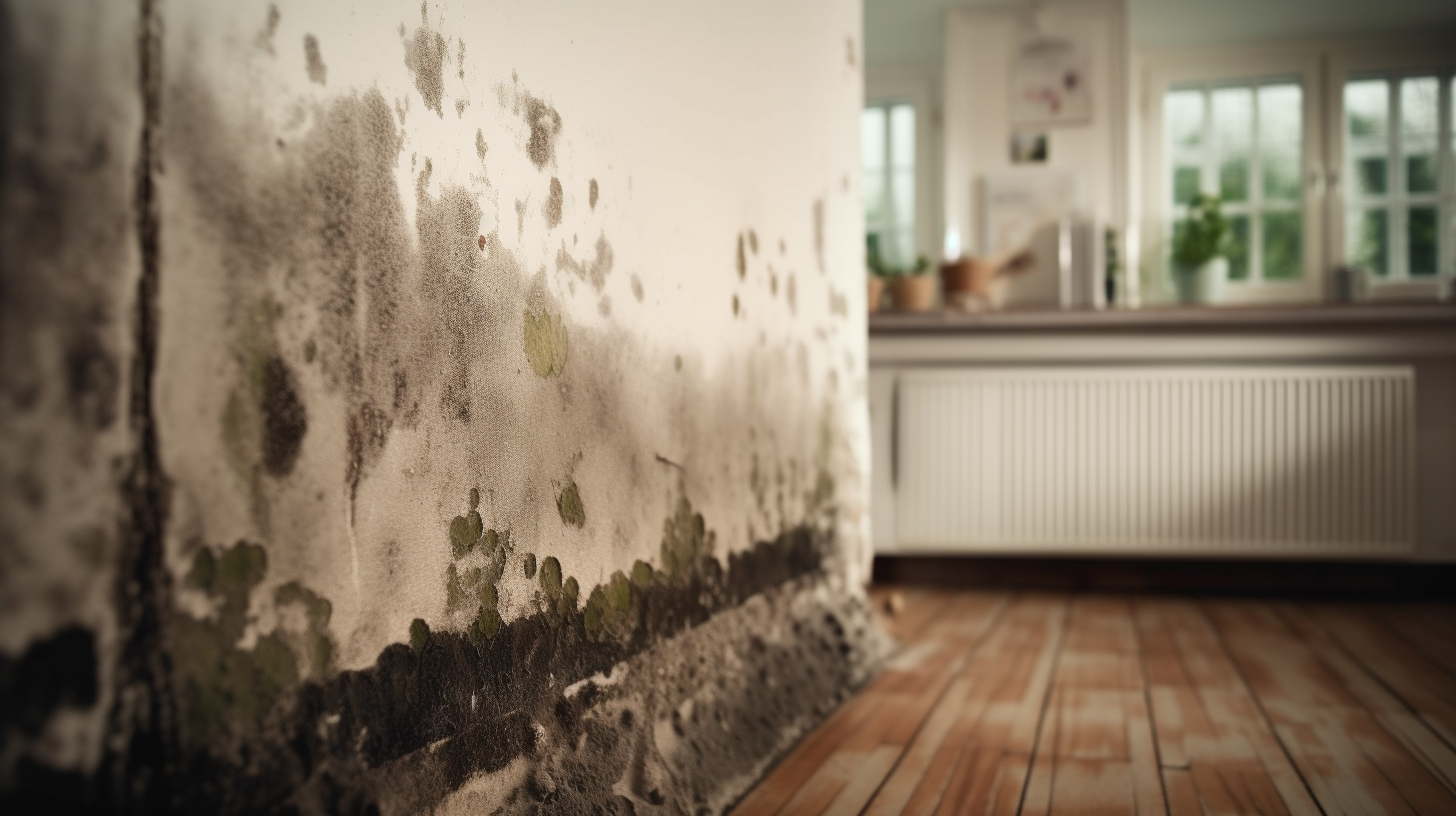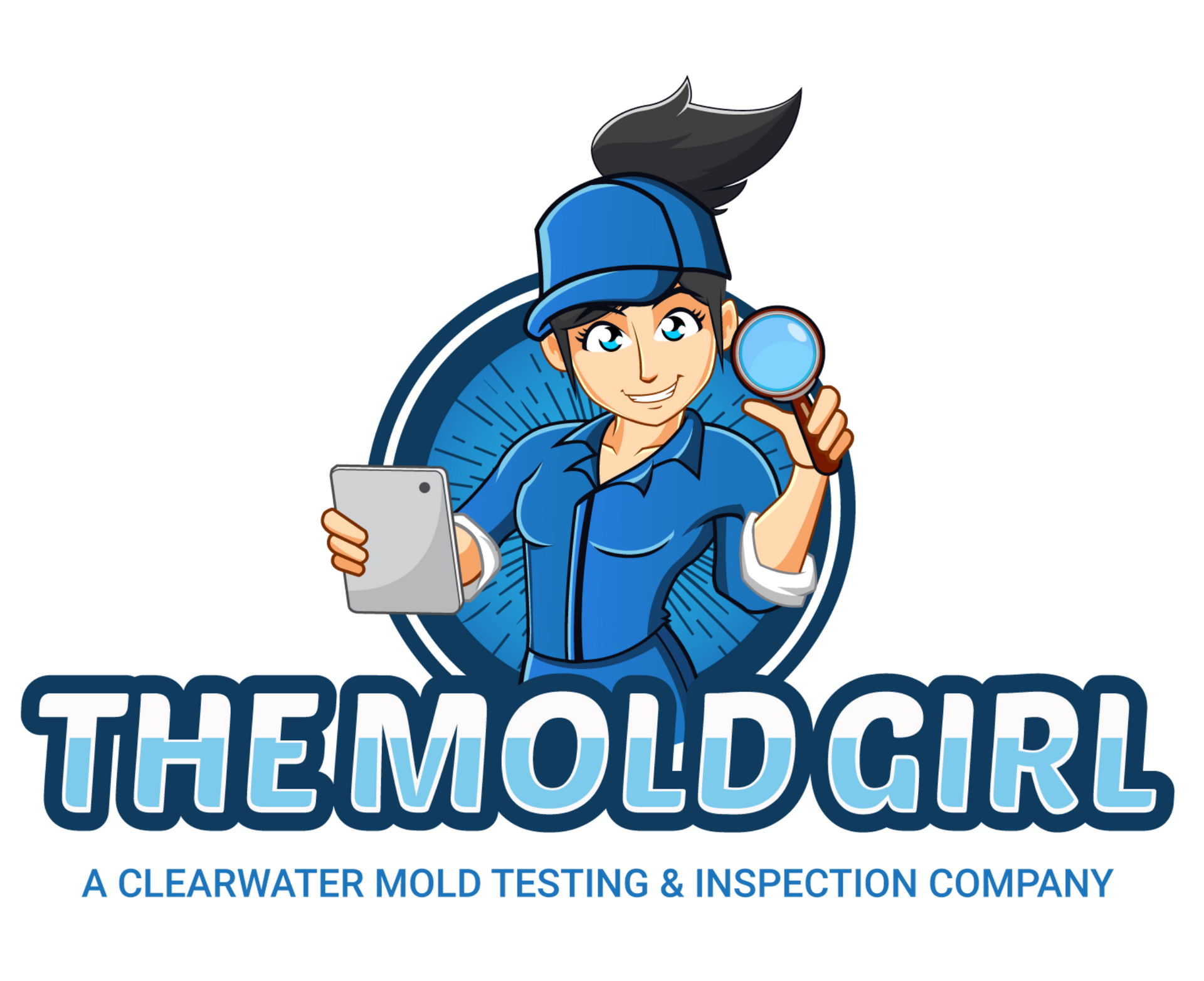Now Is the time to...

Claim Your FREE 15 Minute Phone Consultation Today!
Liz Keefer: 727-626-5331
Speak To A Mold Specialist Today!
Yes, We Offer Mold Detection
Yes, We Offer Black Mold Test
Yes, We Offer Mold Air Test
Yes, We Offer Indoor Mold Testing
It’s time to talk about one of the most dreaded topics for homeowners: mold testing. Unfortunately, mold is an all-too-common problem, creating hazardous living environments and threatening the structures of many homes. If you want to ensure your home is safe and healthy, knowing when and how to test for mold is incredibly important. That’s why we’ve created this guide to walk you through the challenging process of mold testing. By the end, you’ll know what to look for, how to act quickly if mold is present in your home, and why testing is essential even if your home appears to be completely clean. So if you want to take the first step towards a healthier living space, let’s dive right in!
Quick Clarification of Key Points
The most accurate way to test for mold in your home is by hiring a licensed professional. This professional will conduct a thorough inspection of your home and take samples to identify the type of mold present.
Why Mold Testing is Necessary
Mold testing is an important step to protecting the health of your home and family. Left unchecked, mold in homes can cause a variety of health issues, including asthma attacks and coughing spells, as well as respiratory difficulties. Moreover, mold growth can cause structural damages, resulting in costly repairs. For this reason, it’s important to test for potential mold problems before and during any remodeling work in your home.
The argument for performing mold testing is clear: don’t wait until someone gets sick or the property starts to deteriorate before testing for mold. There are environmental professionals who are equipped with the specialized knowledge and equipment to locate and remove mold safely, before it becomes a hazard. Research has also found that professionally trained technicians who perform tests often report back in less than 48 hours, so you can quickly identify potential areas of contamination and take steps to limit further damage.
On the other hand, some would argue that if there are no visible signs of water damage or staining on walls and ceilings then testing may not be necessary. However, many types of mold can go undetected by the untrained eye - making it difficult to spot even visible signs at times - making testing all the more important.
It is true that certain species of "household" molds such as Aspergillus fumigatus, Cladosporium sphaerospermum or Penicillium chrysogenum are considered normal indoor allergens and do not present an immediate health threat. Nonetheless, household molds still have the potential to contaminate indoor air quality over time and should be taken seriously regardless. Thus, Homeowners should remain vigilant about periodic inspections for any form of indoor air quality (IAQ) hazards.
At this point it becomes evident: testing for mold is necessary if we want to protect our own safety and preserve our households from potential harm caused by airborne spores and other hazardous contaminants. Therefore, before taking any further steps let's explore how does one go about properly testing for mold so we can be sure our home remains safe for living in.
- According to the CDC (Centers for Disease Control and Prevention), the most common form of mold testing is air sampling, which aims to detect airborne mold spores.
- The Environmental Protection Agency recommends using Laboratory Culturable Analysis (LCA) when conducting indoor air quality testing for mold. This method utilizes agar plates as well as a solid media that encourages the development of mold colonies.
- According to the EPA, it is best practice to collect at least two samples in order to provide a more accurate assessment of any potential presence of harmful molds inside an indoor space.
The Mold Testing Process
The mold testing process involves a series of steps in order to determine the presence and type of mold present inside a home. These tests are important for evaluating the severity of any mold problem, as different types of mold require different types of remediation.
First and foremost, an initial visual inspection should be performed by an experienced professional. This is important for determining the source and scope of any potential mold growth. Because some types of mold can grow within certain materials or behind walls, conducting a thorough inspection could help identify any areas of concern right away.
Once the initial inspection has been concluded, samples should be taken from suspect areas to determine exactly what species it is and if further action should be taken. This sampling could involve air quality tests as well as physical collections of any visible colonies. It's crucial to have these samples analyzed by a qualified laboratory in order to properly identify the type, density and health risk related to the particular strain found inside the property.
Once the results have been received, further steps can be taken regarding remediations or further inspections needed. Those who take their health seriously may want additional indoor air quality tests conducted inside the home or residence in order to monitor any changes or improvement measures taken since the initial test was performed.
Allowing a mold specialist to inspect your home or residence can greatly reduce any potential health risks associated with indoor mold buildup. Knowing how to proceed when faced with potential mould issues is also essential for maintaining a safe and healthy environment for family, friends and colleagues alike. Now that we've better understood why mold testing is necessary, let’s move onto discussing sampling and inspections – both key components of testing for harmful microorganisms inside your home or residence.
Sampling and Inspections
When it comes to sampling and inspections, there is some debate as to whether individuals or professional inspectors should be utilized in order to accurately assess the environment. On one hand, having a professional service come into your home can be beneficial, as they are often certified and their inspection can give you an accurate assessment of your mold problem. Not only that, many professional services are able to take samples which can then be sent off for laboratory testing. On the other hand, undertaking a DIY inspection can save you money and time if the problem is fairly simple, however if the mold is further entrenched it could miss important clues.
Ultimately, it will depend on the severity of the mold issue in your home. If you are confident that the problem isn’t too bad and you don’t think lab samples have to be taken, by all means go ahead and do your own inspection with guidance from trusted online sources. However, if the problem appears to be widespread or deeply rooted, it is highly advisable to seek out professional assistance in order to guarantee the best results possible.
Once a thorough inspection has been undertaken and all necessary data collected, it’s time to move onto the next step of the process – destruction and remediation.
Professional Destruction and Remediation
Mold testing is an important part of ensuring the health and safety of your home's occupants. After a testing procedure reveals that there may be mold present in the home, the next step is professional destruction and remediation of the affected areas. This type of job necessitates professional help because the presence of mold often indicates underlying water issues that require specialized tools and equipment to properly address.
When it comes to destroying and mitigating the effects of mold, there are generally two camps: those who choose abatement or removal, and those who opt for encapsulation or containment. Abatement involves completely removing any materials which were contaminated with mold and disposing of them safely in accordance with current government regulations. Encapsulation, on the other hand, involves sealing off the contaminated area in order to prevent further spread of mold spores.
It's important to note that neither method is necessarily better than the other; both have their tradeoffs. The potential benefits of abatement include more thorough cleaning, faster results, and complete removal of contaminants from your home. However, this option can also be more time-consuming and labor-intensive, putting strain on both financial resources and human capital. Encapsulation does not require as much manpower and materials as abatement; however, it will also take longer for any noticeable effects to be seen and could potentially result in re-growth if not done properly.
Professional destruction and remediation requires great care - something only experienced professionals should attempt due to its complexity. It is recommended to work closely with a certified expert when considering any form of mold abatement or containment so that you can find a solution tailored specifically to your individual needs. With a trusted professional by your side helping guide you through this process, you can rest assured that every step is taken with your well-being in mind as you seek peace of mind within your own home environment. Now that you understand some of the basics around professional destruction and remediation when dealing with mold, it’s time to learn about how these spores can affects our health and determine if exposure has occurred.
Health Effects and Symptoms of Mold Exposure
The health effects and symptoms of mold exposure vary greatly. Some can experience sneezing, skin rashes, wheezing, runny nose, eye irritation, headache and throat irritation from the microscopic spores that are released into the air by mold growth. These symptoms can also cause asthma attacks in those who have a history of asthma as it stimulates an allergic reaction. On the other hand, some people may not experience any physical symptoms but may suffer from mental health issues due to the presence of mold in their home such as stress, anxiety and depression.
Though research is still ongoing on the long-term health effects of extended exposure to mold, some studies have found a link between an increase in respiratory diseases such as COPD (chronic obstructive pulmonary disease) and increased levels of mold in household air. Furthermore, some toxins (mycotoxins) may be produced by certain types of molds under certain conditions which can become airborne and also result in adverse effects to humans ranging from fatigue to headaches and even neurological damage.
Thus, if you believe there is mold present in your home either due to visual inspection or if you notice any physical or mental health changes in yourself or family members that may be linked to mold exposure then it is best to take action immediately and test for it. Taking preventive measures and testing for potential risks are necessary steps for protecting your family’s health; rather than waiting for potential long-term ill effects to manifest. With that said, now let’s move on to summarizing our findings and exploring the various takeaways and conclusions that we have drawn from this article series.
Conclusions and Takeaways
When it comes to mold testing, understanding the potential health effects and symptoms of mold exposure is essential. On one hand, if left untreated, some types of mold can cause serious respiratory illnesses and asthma-like symptoms in those exposed to them. But on the other hand, not all molds are harmful; in fact, many types of fungi are an essential part of our natural environment.
The best way to protect your home from dangerous levels of mold is to proactively test for it by hiring a professional service or purchasing a do-it-yourself mold testing kit. If the test reveals levels higher than what’s considered safe, you have a few options: remove the source of the problem (e.g., a leaking pipe), hire a professional remediation services company to remove the mold, or invest in a dehumidifier or air purifier.
In conclusion, understanding the potential health risks associated with indoor mold and testing your home prior to remodeling or moving is an important step to guarantee that your family’s health remains top-of-mind. Remember: If you suspect something is off with your living environment—whether that’s odor or visible growths on surfaces—it couldn’t hurt to get tested for peace of mind.
Responses to Common Questions with Detailed Explanations
What safety measures should be taken when conducting a mold test?
When conducting a mold test, it is essential to take certain safety precautions in order to prevent any potential health risks. First and foremost, it is important to wear the appropriate safety gear, such as a respirator, gloves, and protective garments. This will help protect you from inhaling or coming into contact with harmful mold spores. Additionally, it is important to avoid disturbing any existing mold, as this can cause spores to become airborne - which can result in serious breathing problems for those exposed. Finally, make sure to open windows and/or use fans to exhaust air from the testing area - this will help reduce the spread of any contaminated air caused by the testing process. Following these basic safety measures when performing a mold test will go a long way in protecting one’s health and well-being.
What factors determine the cost and type of mold testing needed?
The cost and type of mold testing needed is typically determined by the size of the area being tested, the type of test chosen, and the extent of any existing mold in the area.
When a larger area is being tested, more time is required to gather the necessary samples, resulting in higher costs. If more intricate methods such as air sampling, surface sampling, or bulk sampling are utilized then the cost will generally be higher as well. Additionally, if materials within the area are likely to contain mold, such as carpets or furniture, then further testing may be necessary to determine its presence and this can also add to the overall costs.
In summary, when considering costs for mold testing it is important to consider the size and scope of the affected area, as well as the intended purpose and methodologies employed in collecting the data.
What are the steps involved in a mold test?
Mold testing is a complicated process, but if done correctly it can give you valuable information about the air quality in your home. Here are the steps to take when testing for mold:
1. Establish the Reason: First, establish why you’re testing for mold. Are you purchasing or selling a home? Do you suspect an outbreak? Understanding the purpose behind the test will help determine the scope of the project.
2. Identify Suspect Areas: Before hiring a professional inspector, look around your home for areas you suspect may have mold growth. This could include any damp or stained areas in attics, basements, craw spaces and bathrooms. Make note of these areas so they can be included in an inspection report.
3. Get an Inspector: Once you’ve identified possible problem areas, hire a credible mold inspector who will use both visual examination and specialized tools to detect hidden mold colonies. He or she should also take air samples to compare with reference data to detect elevated levels of indoor health hazards.
4. Receive Results: Mold inspectors typically provide their results within a few days of the initial inspection, after which necessary steps need to be taken to remove any existing mold colonies and improve indoor air quality.
5. DIY Testing: In addition to hiring a professional inspector, there is also do-it-yourself (DIY) testing kits available for homeowners on a budget. These kits usually come with instructions on how to collect and identify samples that can then be sent for laboratory analysis for more accurate results than visual inspection alone can provide.
Recent Blog Posts
Pinellas County Mold Blog


What are you waiting for?
Let's Solve Your Mold Issues Today!
Hire the best mold testing company in the Clearwater, FL area who provides the highest level of personal service you deserve.
Call Us Today at: 727-626-5331
The Mold Girl - A Clearwater Mold Testing and Inspection Company understands the importance of clean air. With over a decade of experience in the industry, we are passionate about helping her clients achieve and maintain healthy indoor spaces.
CONTACT INFORMATION
Phone: 727-626-5331
Email: info@askthemoldgirl.com
Address: 974 Park St Apt 318
Business Hours:
Mon-Fri: 8:00 AM - 4:00 PM
Sat-Sun: Closed
ADDITIONAL INFORMATION
Us Across The Web
Geo
Neighborhoods
Niche
All Rights Reserved | The Mold Girl - A Clearwater Mold Testing and Inspection Company
Privacy Policy | Terms & Conditions | Sitemap




